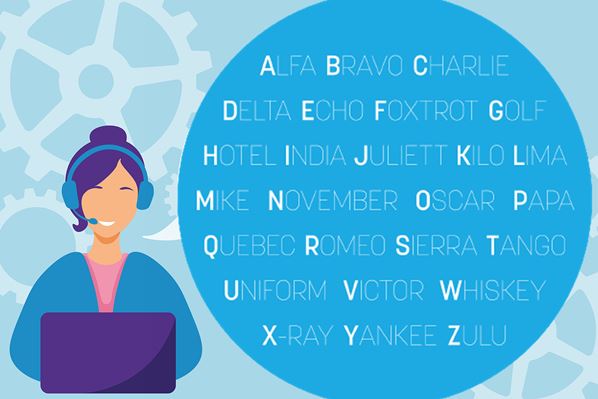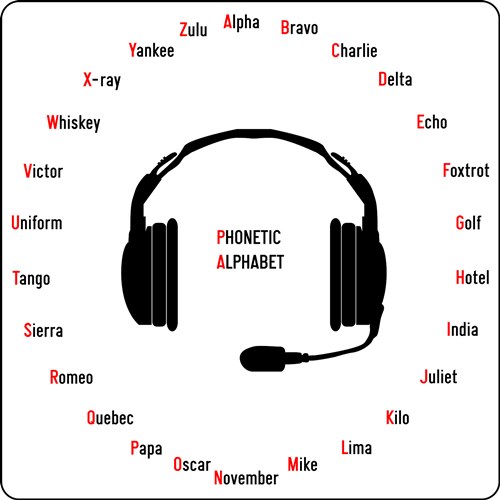
There are a lot of things that go into making a successful call center. One of the most important, but often overlooked, aspects of a call center is the use of the phonetic alphabet.
The phonetic alphabet is a system of representing the sounds of speech using written symbols. The alphabet is used by linguists, speech-language pathologists, and other professionals who work with language. It is also used by customer support teams in the contact center industry.
The phonetic alphabet can be used to represent the sounds of any language. Each sound is represented by a separate symbol. The symbols in the phonetic alphabet are written in square brackets [ ] to distinguish them from the letters of the regular alphabet.
In addition to the 26 letters of the regular alphabet, the phonetic alphabet includes additional symbols for nasal sounds, liquids, and glides. The alphabet is a powerful tool for understanding how language works.
By representing the sounds of speech with symbols, we can see patterns and relationships that are not apparent when we simply listen to spoken language. The phonetic alphabet can also be used to transcribe spoken language so that it can be studied more carefully.

NATO phonetic alphabet
The NATO phonetic alphabet is a standardized system for assigning code words to letters of the alphabet. The intent is to ensure that each letter is pronounced in a consistent manner, making it easier to understand regardless of the native language of the speakers. Originally developed for use by military and other government officials, the phonetic alphabet has also been adopted by other organizations such as call centers.
There are 26 code words in the NATO phonetic alphabet, one for each letter of the English alphabet. Each code word is intended to be spoken distinctly and accurately, so that it can be easily understood regardless of background noise or other interference. The most commonly used code word for each letter is shown below:
A – Alpha
B – Bravo
C – Charlie
D – Delta
E – Echo
F – Foxtrot
G – Golf
H – Hotel
I – India
J – Juliett
K – Kilo
L – Lima
M – Mike
N – November
O- Oscar
P – Papa
Q- Quebec
R- Romeo
S- Sierra
T- Tango
U- Uniform
V- Victor
W- Whiskey
X- Xray
Y- Yankee
Z- Zulu
How to use the phonetic alphabet in a call center
In a call center, it is important to be able to communicate clearly and concisely. One way to do this is to use the phonetic alphabet.
Each word of the phonetic alphabet is chosen so that it is unlikely to be confused with any other word. For example, the word for “B” is “Bravo,” and the word for “D” is “Delta.” Using the phonetic alphabet can help to ensure that each letter in a word is pronounced correctly, which can make it easier for customers to understand what you are saying. In addition, using the phonetic alphabet can help to prevent miscommunications between agents and customers.
To use the phonetic alphabet, simply pronounce each letter of the alphabet according to its corresponding word. For example, if you wanted to say the word “cat,” you would say “Charlie-Alpha-Tango.” Using the phonetic alphabet can help to make your communications more clear and efficient.
Problems with Phonetics
The phonetic alphabet is an important tool for clear communication, especially in emergency situations. However, the NATO phonetic alphabet is not without problems. First, several of the words in the alphabet (such as ” Bravo” and ” Hotel”) are difficult to pronounced correctly, which can lead to confusion in a high-pressure situation. Second, the NATO phonetic alphabet is based on English, which can be problematic for international communications. Finally, the alphabet is constantly being updated, which can make it difficult for users to keep track of the latest versions of the words. Despite these problems, the phonetic alphabet remains an important tool for clear communication.
There are many different ways to use the phonetic alphabet, but the most important thing is to be consistent in how you use it.
Tips for using phonetics
Here are some simple tips to keep in mind when using phonetics in a call center:
- Use a common phonetic alphabet. There are many different phonetic alphabets out there, so it’s important to choose one that everyone in the call center can use. A popular choice is the NATO phonetic alphabet.
- Be clear and concise. When using the phonetic alphabet, make sure you are speaking clearly and concisely. This will help to avoid confusion and miscommunication.
- Practice beforehand. If you’re not used to using the phonetic alphabet, it’s important to practice beforehand so that you don’t make any mistakes when using it in a call center. You can practice by yourself or with someone else who is also familiar with the phonetic alphabet.




